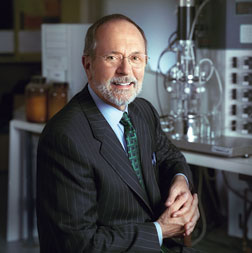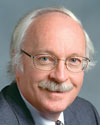 Polytechnic University Poly’s Hultin hopes for better results this time. |
Three years after breaking off merger talks, Manhattan-based New York University and Polytechnic University, Brooklyn, have agreed to give marriage a second chance. The planned link, set for a vote as early as October by the schools’ respective boards, would create an engineering, technology and research hub in New York. Officials say it would attract a larger and more global array of students into the science and engineering field.
NYU disbanded its Bronx-based engineering school and other facilities in the early 1970s as a cost-cutting move.At the time, the university, as well as the surrounding metropolis, was in serious financial straits. “The way to solve the crisis was to sell that campus and use the resources to stabilize ourselves,” says NYU Provost David McLaughlin. Most of the school’s engineering faculty ended up in Brooklyn, at Polytechnic.
Plugging a HoleSince then, however, NYU has acknowledged the hole in its academic offerings and technology development program. “The absence of a school of engineering and applied science has been felt keenly in a world increasingly reliant on technology,” NYU President John Sexton wrote in an Aug. 7 memo to staff and constituents.
 Polytechnic University Engineering school will boost NYU research. |
Polytechnic had its own budget difficulties but has improved its financial profile. It still is limited by its more localized base and stronger overall competition for engineering students. NYU is the nation’s largest private university with more than 20,000 undergraduates and 19,000 graduate students. Its endowment is more than $1.8 billion, according to U.S. News & World Report’s latest rankings of best colleges, issued in August. It listed NYU in 34th place among national universities in the U.S., tied with Boston College and the University of Wisconsin-Madison.
Polytechnic has about 3,200 students, about evenly split between undergraduate and graduate students. It is the nation’s second-oldest private engineering school, founded in 1854. The school’s Website touts its graduates who went on to invent everything from Teflon non-stick coating to CIA surveillance systems. Joseph Jacobs, the founder of Jacobs Engineering Group Inc., Pasadena, Calif., earned three engineering degrees in the 1930s and 1940s. Henry Goldmark, an innovator of steel construction used in the Panama Canal locks system, graduated in 1874.
 |
| MCLAUGHLIN |
Polytechnic President Jerry Hultin says the proposed match with NYU should be more successful on its second attempt, noting the failure of merger talks three years ago. “The dot-com crash and 9/11 had unsettled Poly’s performance. We were not in a strong position,” he says. According to university sources, the two schools could not come to terms on faculty staffing and tenure issues. “Since then, we have leveled off our finances and increased our budget,” says Hultin. Officials declined to elaborate on specifics of staffing-related discussions but, according to McLaughlin, “we will treat the issues to everyone’s satisfaction.”
 Polytechnic University Polytechnic University appeals to a wide variety of students. |
The proposed link with NYU would provide Polytechnic access to NYU’s deeper pockets, broader research base and a broader student admissions network. “This is on every university president’s mind these days,” Hultin says. One Polytechnic source says the school “could take another 300 to 500 students.” The university draws students largely from the New York metropolitan area. “NYU is a university that draws a large applicant pool from all over the nation and all over the world,” says McLaughlin. “We are very visible in the high schools. This applicant pool will enhance Poly’s program almost immediately, and if the union works, Poly would join NYU in a new reaching-out process.”
If the new union is approved this fall, Polytechnic would become the Polytechnic Institute of New York University, with its downtown Brooklyn location near the booming Metrotech development becoming an NYU campus. “NYU is very interested in having a location in Brooklyn,” says McLaughlin. Polytechnic’s location in an area with large minority populations and its traditional attraction to a diverse student body would add to NYU’s own diversification efforts. Under the proposed unification plan, Hultin, who joined Polytechnic as president in 2005, is likely to remain in that same role through 2013. After that, the school’s head would become a dean of NYU, officials say. Hultin is the former dean of Stevens Institute of Technology in nearby Hoboken, N.J., and also was undersecretary of the Navy in the Clinton adminis-tration.
 Polytechnic University Infrastructure research and engineering could grow with new ties. |
Hultin, who is on the board of the New York Building Congress, says NYU is “excited by the increased range of offerings in engineering,” especially as the Aug. 1 bridge collapse in Minneapolis has focused attention on the need for infrastructure innovation. He notes the potential of combining civil engineering with NYU’s advanced materials science research in fiber optics and microstressing. Officials also are eyeing new links in biomedical and computer-related research and engineering. While the merger will take several years to gel, Hultin hopes to begin recruiting students for the combined program by fall 2008. McLaughlin points out that “a science major could perhaps minor in engineering” in the new institution. NYU’s access to an existing engineering and technology base could accelerate research into implementation and elevate the school into the realm of major centers of innovation such as California’s Stanford University and the Massachusetts Institute of Technology, officials say.
School officials could not name similar academic links under way elsewhere, but “there are rumors of others,” says McLaughlin.

Post a comment to this article
Report Abusive Comment